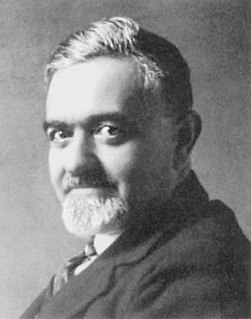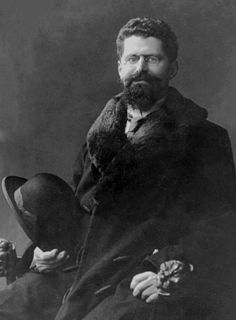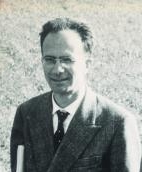| Leopoldo Maggi | |
|---|---|
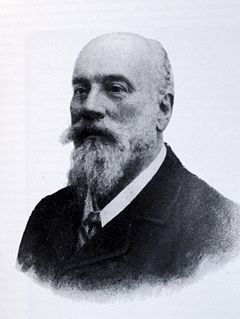 | |
| Born | 15 May 1840 Rancio Valcuvia, near Varese |
| Died | 7 March 1905 (aged 64) Pavia |
| Nationality | Italian |
| Scientific career | |
| Fields | naturalist |
Leopoldo Maggi (Rancio Valcuvia, near Varese, May 15, 1840 – Pavia, March 7, 1905) was an Italian physician, craniologist and naturalist. [1]

Varese is a city and comune in north-western Lombardy, northern Italy, 55 kilometres (34 mi) north of Milan.

Pavia is a town and comune of south-western Lombardy, northern Italy, 35 kilometres south of Milan on the lower Ticino river near its confluence with the Po. It has a population of c. 73,000. The city was the capital of the Kingdom of the Lombards from 572 to 774.
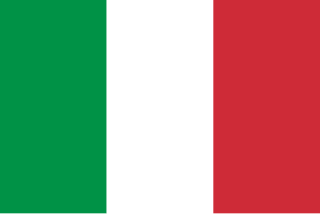
Italy, officially the Italian Republic, is a country in Southern Europe. Located in the middle of the Mediterranean Sea, Italy shares open land borders with France, Switzerland, Austria, Slovenia and the enclaved microstates San Marino and Vatican City. Italy covers an area of 301,340 km2 (116,350 sq mi) and has a largely temperate seasonal and Mediterranean climate. With around 61 million inhabitants, it is the fourth-most populous EU member state and the most populous country in Southern Europe.
Contents
He completed his studies in the University of Pavia. In 1863 he obtained two degrees: in Natural sciences and in Medicine and surgery and became assistant first to Paolo Panceri (1833-1877) the teacher of several other outstanding Italian zoologists of the end of the 19th century and then to Giuseppe Balsamo Crivelli.In 1864 he was appointed lecturer in Mineralogy and Geology at Pavia, where from 1874 he held the professorship of Zoology and Comparative anatomy. When zoology became a separate subject in 1875 he held the chair of Comparatve anatomy and Physiology occupying this until his death. [2]
The University of Pavia is a university located in Pavia, Lombardy, Italy. It was founded in 1361 and has thirteen faculties.

Paolo Panceri was an Italian naturalist. Panceri graduated in medicine at the University of Pavia where he began his research. In 1861 he took the Chair of Comparative anatomy at the University of Naples, where he directed the Zoology Museum. Panceri was cautious about the scientific validity of evolutionary theories but was instrumental in the foundation of the Stazione Zoologica Anton Dohrn .His findings on the bioluminescence of marine invertebrates and studies of Amphioxus led to fame in Italy and abroad. In 1874 he sold his books and scientific papers to Biblioteca Universitaria di Napoli to pay for an expedition to Egypt. They constitute an example of a nineteenth-century library specializing in the natural sciences and comparative anatomy. His students in Naples include Carlo Emery, Leopoldo Maggi and Antonio della Valle.He died aged 44.

Giuseppe Gabriel Balsamo-Crivelli was an Italian naturalist.
For years he devoted himself to biology and especially to comparative anatomy, but also to Mineralogy, Osteology, Prehistoric archaeology, craniology and Protistology. [1]

Mineralogy is a subject of geology specializing in the scientific study of the chemistry, crystal structure, and physical properties of minerals and mineralized artifacts. Specific studies within mineralogy include the processes of mineral origin and formation, classification of minerals, their geographical distribution, as well as their utilization.
Osteology is the scientific study of bones, practiced by osteologists. A subdiscipline of anatomy, anthropology, and archaeology, osteology is a detailed study of the structure of bones, skeletal elements, teeth, microbone morphology, function, disease, pathology, the process of ossification, the resistance and hardness of bones (biophysics), etc. often used by scientists with identification of vertebrate remains with regard to age, death, sex, growth, and development and can be used in a biocultural context. Osteologists frequently work in the public and private sector as consultants for museums, scientists for research laboratories, scientists for medical investigations and/or for companies producing osteological reproductions in an academic context.
Prehistoric archaeology is the study of the past before historical records began. It is a field of research that looks at all the pre-urban societies of the world. It also has distinctive set of procedures for analysing material remains so that archaeologists can reconstruct their ecological settings. The study of prehistoric archaeology reflects the cultural concerns of modern society by showing interpretations of time between economic growth and political stability. It also has very close links with biology, biological anthropology, and geology. It is also sometimes termed as anthropological archaeology because of its indirect traces with complex patterns.
He was the first Italian to pay attention to Protozoa and his studies on Protozoa [2] and Protistology are of considerable importance, although conditioned by the belief in spontaneous generation and Monera and by the adhesion to the doctrines of Ernst Haeckel. The Haeckel and Maggi theories declined at the beginning of 1900. [3]

Protozoa is an informal term for single-celled eukaryotes, either free-living or parasitic, which feed on organic matter such as other microorganisms or organic tissues and debris. Historically, the protozoa were regarded as "one-celled animals", because they often possess animal-like behaviors, such as motility and predation, and lack a cell wall, as found in plants and many algae. Although the traditional practice of grouping protozoa with animals is no longer considered valid, the term continues to be used in a loose way to identify single-celled organisms that can move independently and feed by heterotrophy.
Protistology is a scientific discipline devoted to the study of protists, a highly diverse group of eukaryotic organisms. Its field of study overlaps with more traditional disciplines of phycology, mycology, and protozoology, just as protists, which, being a paraphyletic group embrace algae, some organisms regarded previously as primitive fungi, and protozoa.

Spontaneous generation refers to an obsolete body of thought on the ordinary formation of living organisms without descent from similar organisms. The theory of spontaneous generation held that living creatures could arise from nonliving matter and that such processes were commonplace and regular. For instance, it was hypothesized that certain forms such as fleas could arise from inanimate matter such as dust, or that maggots could arise from dead flesh. A variant idea was that of equivocal generation, in which species such as tapeworms arose from unrelated living organisms, now understood to be their hosts. The idea of univocal generation, by contrast, refers to effectively exclusive reproduction from genetically related parent(s), generally of the same species.
The studies of Leopoldo Maggi, at first eminently descriptive with the discovery of numerous taxa, had a rapid evolution in the medical field and converged in bacteriology. [1] [4] Also noteworthy are his research on the skull, conducted with comparative and evolutionary address. Many of his interpretations are nowadays outdated, but the descriptive part remains valid. [1] [4]

